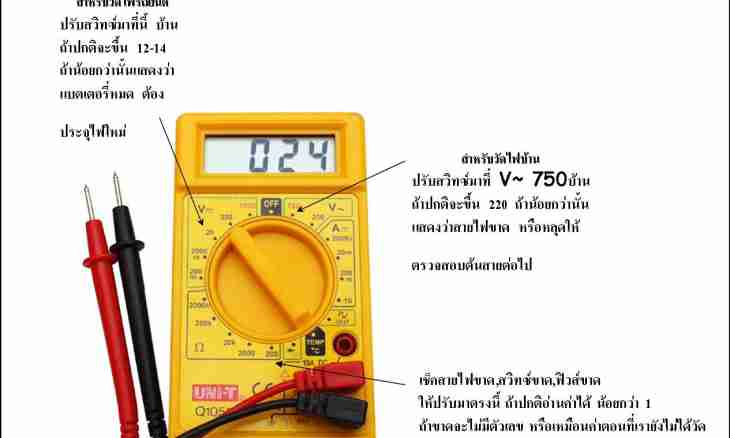Waves are different. Sometimes it is required to measure amplitude and wavelength of a surf on the coast, and sometimes – the frequency and tension of a wave of an electric signal. For each case there are ways of obtaining parameters of waves.
It is required to you
- tide gage, stop watch, electronic manometer, generator of standard signals, oscillograph, frequency meter.
Instruction
1. For determination of height of a wave near the coast in shallow water thrust a tide gage in a bottom. Notice the divisions on a tide gage coinciding with top and lower (crest and the hollow) levels of the wave passing by it. Take away smaller value from bigger value and receive wave height size. For more exact measurement use the electronic manometer. Arrange its sensor on that place where you wish to measure wave height. Mark instrument readings during passing over the sensor of a crest and the hollow of a wave. Take away smaller value from bigger value and receive the pressure difference size corresponding to wave height.
2. For determination of speed of the movement of a wave note a stop watch time between passing over the sensor or a tide gage of two next crests of a wave. Determine wavelength by two tide gages. For this purpose arrange them so that tops of two next waves passed by tide gages at the same time. Then measure distance between tide gages (in meters). It will be equal to wavelength. Divide 60 into time measured by a stop watch and increase by wavelength. Receive the speed of the movement of a wave (in meters per minute). Example: time of passing of a wave is 2 seconds, and wavelength is equal to 3.5 meters. In that case the speed of the movement of a wave will be (60/2) ×3.5=105 meters per minute.
3. For recalculation in meters per second divide this result into 60 (105/60=1.75 meters per second), and for recalculation in kilometers per hour increase by 60 with the subsequent division into one thousand (105×60=6300 meters per hour, 6300/1000=6.3 kilometers per hour).
4. For determination of parameters of an electric signal use special devices. Connect the generator of standard signals to an oscillograph. Install in the generator amplitude of an output signal in 1 Volt. Include an oscillograph and adjust its sensitivity so that the top level of a signal coincided with the front wide page down on a screen grid. Switch-off the generator and connect a source of the studied signal. Count amplitude of an entrance signal on vertical wide strips.
5. Connect a source of the studied signal to a frequency meter entrance. Take readings of frequency from the frequency meter indicator. For obtaining wavelength divide the speed of light into the frequency of the studied signal. Example: the measured frequency is 100 MHz, wavelength is equal 299792458/100000000=2.99 meters.

